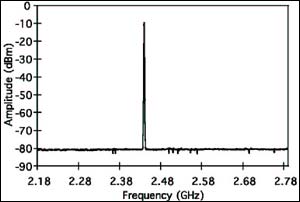This special field revolves around processes for modifying material properties (milling, cooling), composition (filtration, distillation) and type (oxidation, hydration).
Valuable information is available on a broad range of technologies including material separation, laser processes, measuring techniques and robot engineering in addition to testing methods and coating and materials analysis processes.

A unique device has been designed by the Moscow scientists – specialists of the Institute of General Physics, Russian Academy of Sciences, supported by funding from the Russian Foundation for Basic Research. The device not only helps to discover in a few seconds the minute quantities of narcotics and explosives in the air, but to identify and even count every single molecule of these dangerous substances. For the first time has the man managed to approach the creation of device more sensitive than th

Working with capsules of dye just a few billionths of a metre in diameter, researchers at University of Toronto and the advanced optical microscopy facility at Toronto’s Princess Margaret Hospital have created a new strategy for encrypting photographs, signatures and fingerprints on security documents.
“This technology will give security or customs authorities the confidence that documents are not fake,” says U of T chemistry professor Eugenia Kumacheva, who holds the Canada Research C

Police dogs across the country could soon be out of work, replaced by an electronic “dog-on-a-chip” that sniffs out cocaine and other narcotics. Scientists at Georgia Tech have created a new detection tool that is portable, inexpensive, and doesn’t require feeding or grooming. They say it is superior to previous “electronic noses” designed for this purpose.
The report will appear in the Nov. 15 edition of Analytical Chemistry, a peer-reviewed journal of the American Chemical Society, t

45th Annual Meeting of the Division of Plasma Physics
A new invention removes noisy microwave signals from microwave ovens and prevents them from interfering with cordless phones and wireless computer networks. The new technology, developed by plasma physicists at the University of Michigan, is also expected to lead to more efficient microwave ovens, with little or no addition to the ovens’ cost.
Microwave ovens heat food by emitting microwaves from a device called a m

A real renaissance in European manufacturing was the focus of a briefing chaired by European Research Commissioner Philippe Busquin today. The briefing highlighted the EMO MILANO 2003 Fair in Milan, the world’s largest trade event for the machine tools, robots and automation industries which attracted over 1600 exhibitors from 38 countries and 200,000 visitors. It also emphasised the contribution of EU research in support of the European manufacturing industry. Currently, Europe provides for 52% of t

In Friday’s edition of Applied Physics, TU Delft researchers will publish an article on how coatings are made and why they so often let go. “Finally, after 30 years, we know exactly what happens,” says Dr. Guido Janssen, materials expert at TU Delft and first author of the article to be printed in the prestigious American journal. Together with his colleagues at the Netherlands Institute for Metals Research (NIMR), he has brought the coating of very small components one step closer.
Ta